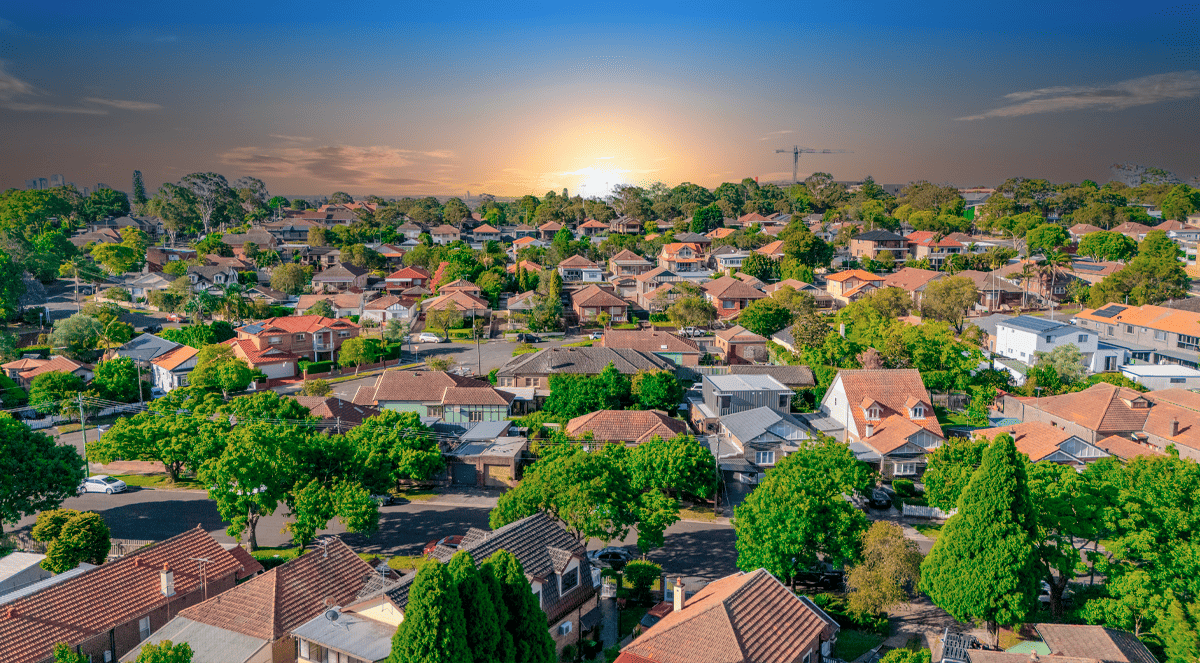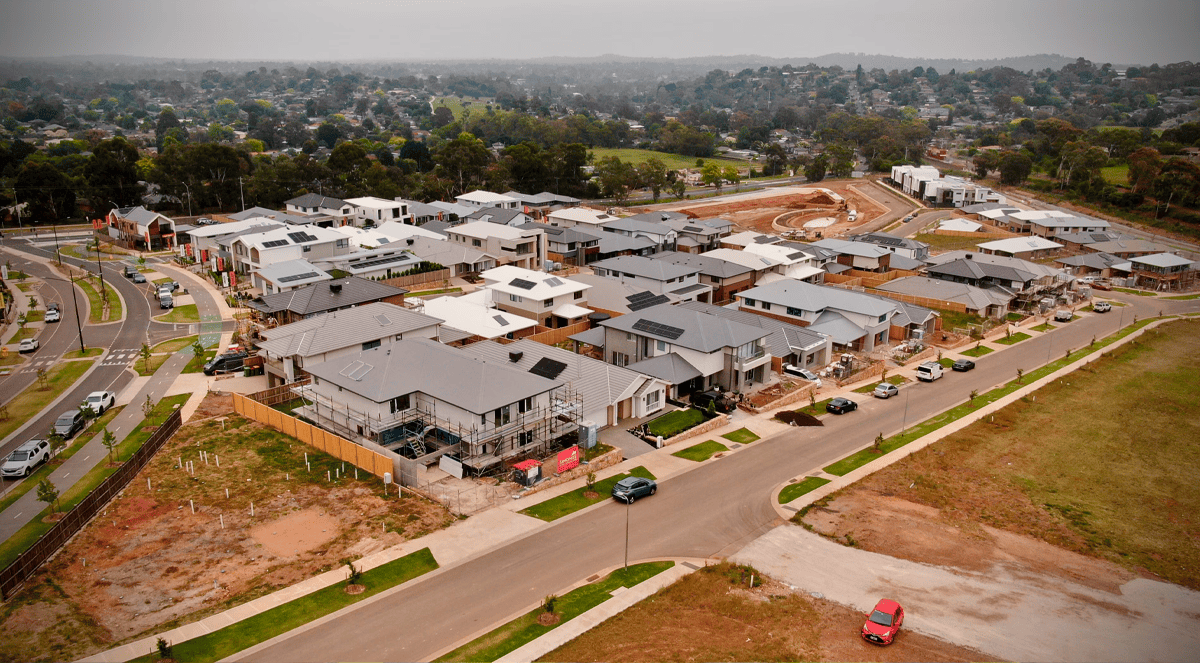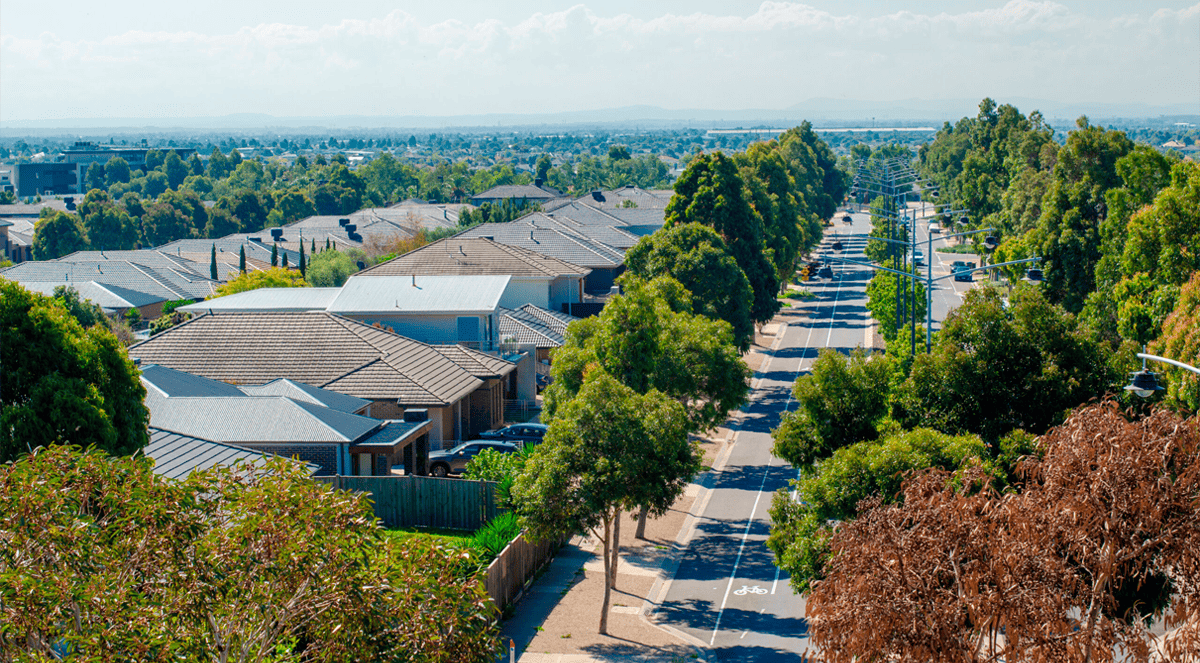Features > Property News & Insights > Market updates
Which areas will see the biggest property price boosts from rate cuts?
.png)
Image from Eliza Owen’s LinkedIn
KEY POINTS
- More expensive suburbs in Sydney and Melbourne are set to see property value gains of up to 19% if the Reserve Bank of Australia cuts rates by at least 1%
- With a 1% rate cut, national median property values could rise 6.1% as lower rates boost borrowing and make property investment more attractive
- Perth and Adelaide’s property markets respond less to rate changes, with mining booms and migration patterns having a greater impact on prices
Relatively expensive suburbs - primarily in Sydney and Melbourne - stand to see the greatest price gains when the Reserve Bank of Australia begins cutting interest rates.
Houses in suburbs such as Leichhardt, Balmain, Lilyfield and Rozelle in Sydney and Blackburn, Box Hill, Mont Albert and East Burwood in Melbourne seem to have the most to gain from a reduction in interest rates.
Modelling by CoreLogic suggests these areas could see large gains of at least 18% from current values if the official cash rate is cut by at least one full percentage point.
However, these projected gains will be partially offset by declines from peak values these suburbs have experienced over the last two years - particularly in Melbourne’s unit market.
Nationally, CoreLogic estimates median property values would see a 6.1% boost if interest rates are cut by 1%.
The details
The Reserve Bank of Australia is widely expected to begin cutting interest rates at its next board meeting - a move that will bring some much-needed relief to Aussie mortgage holders.
The official cash rate is currently at a 13-year high of 4.35% - a rate which equates to retail variable rate mortgages in the 6-7% range.
An anticipated cut in February of 0.25% is expected to be the first in a series of interest rate reductions, with Australia’s largest mortgage lender - Commonwealth Bank - expecting a total of 4 cuts totalling 1% by the end of 2025.
Banks, economists and property market analysts believe rate cuts have the potential to reinvigorate a slowing property market, with CoreLogic recording no value growth nationally in January.
“Lower rates mean buyers can borrow more, spend more, and ultimately make housing a more attractive investment,” says CoreLogic’s Head of Research Eliza Owen.
So, what effect would rate cuts have on the Australian property market, and which suburbs stand to see the biggest gains?
To help answer that question, Ms Owen has looked at what happened in three previous rate reduction cycles (August 2014 – May 2015, November 2015 – August 2016 and December 2018 – October 2019).
“CoreLogic estimates, based on previous periods of rate reductions, that national dwelling values would increase an average of 6.1% for each 1 percentage point decline in the cash rate,” Eliza Owen says.
However, she cautions, “Australia is not one housing market.
“If history is anything to go by, certain markets will see a bigger boost from rate reductions than others, and it may be because of market characteristics like price point, location and investor interest.”
Eliza Owen says relatively expensive suburbs have historically shown stronger responses to reduced cash rate settings, especially when it comes to houses.
“Sydney and Melbourne houses and units seem to have the most to gain from a reduction in interest rates,” she says.
CoreLogic’s data shows that in Sydney, the SA3 (ABS Statistical Area Level 3) area that has the most to gain from a 1% interest rate cut in house markets is Leichhardt, which takes in the inner west suburbs of Leichhardt, Lilyfield, Birchgrove and Balmain.
Leichhardt area houses are forecast to see a median jump of 19.1%, but given values there are nearly 7% off their Covid property boom peak, this would equate to a net gain of just over 12%.
When it comes to units, CoreLogic predicts the sprawling Dural-Wisemans Ferry area on Sydney’s northern fringe would see the most gains from interest rate cuts with a 17.7% lift.
When a 3.9% decline from the Covid peak is factored in, this would see a net gain of 13.8%.
In Melbourne, CoreLogic nominates the Whitehorse-West area, which includes the suburbs of Blackburn, Box Hill, Mont Albert and Burwood East as having the most potential gains for houses, with an 18.4% lift if there’s a total of 1% of cuts in the RBA cash rate.
When a 6% decline from peak values is factored in, this would see a net gain of 12.4%.
Net gains are predicted to be much smaller in Melbourne’s beleaguered apartment market, where recent changes to minimum rentals standards and increased state government charges have led to many investors deciding to sell up, leading to plenty of stock for sale and price falls.
So, while the Glen Eira SA3 (which includes suburbs like Caulfield, Bentleigh, Ormond and Murrumbeena) is predicted to see the biggest impact of any interest rate cuts with a 12.3% jump, the net gains are only projected to be a relatively small 0.5%.
“In Sydney, Melbourne, Hobart and Canberra, many of the markets with a solid response to rate reductions are also seeing values well below their peak under recent interest rate rises, so easier access to credit may trigger a recovery trend in these markets,” Eliza Owen notes.
It’s a different story in Brisbane, where all markets predicted to gain from interest rate cuts are at or near recent price peaks.
“The Brisbane markets that have historically had the strongest reaction to a reduction in interest rates are also relatively expensive,” Ms Owen says.
“With the exception of Browns Plains, each of the top ten house markets had a median house value of at least $1 million.”
CoreLogic’s Eliza Owen says the relationship between the RBA cash rate and home values has historically been far less pronounced in Adelaide and Perth.
“In Perth and WA, market values were far more influenced by the boom-and-bust conditions in the mining sector than movements in the domestic cash rate target,” she says.
In South Australia, she says dwellings “had slow and steady value changes throughout the 2010s, before seeing a rapid ‘catch up’... through the COVID period.
“Changes to internal migration through the pandemic, namely a boost to arrivals from Victoria and a decline in departures from the state, also aided growth.
“Interestingly, WA and SA also saw virtually no response in the trajectory of home value to higher interest rates, which has further demonstrated the loose relationship between the cash rate and property values in these states,” Eliza Owen observes.
In summary, CoreLogic’s analysis shows the markets that stand to gain the most from a cash rate cut are probably those that have historically demonstrated more sensitivity to changes in financial and interest rate settings.
“These are typically the higher-end markets of Sydney and Melbourne, many of which have also seen a substantial reduction in home values amid rate rises,” CoreLogic’s Eliza Owen says.
Ms Owen says a reduction in the cash rate could spur a “recovery trend” in more expensive suburbs in Sydney and Melbourne, “which tend to be the bellwether for broader market recoveries in those cities.”
Stay Up to Date
with the Latest Australian Property News, Insights & Education.




.png?width=292&height=292&name=Copy%20Link%20(1).png)
 SIGN UP FOR FREE NEWSLETTER
SIGN UP FOR FREE NEWSLETTER





.jpg?width=1920&height=1080&name=Warning%2c%20You%20Might%20Be%20Facing%20Higher%20Taxes%20Soon%20(1).jpg)





.png?width=1920&height=1080&name=Rate%20Drops%20Signal%20BIGGEST%20Property%20Boom%20in%20DECADES%20(1).png)

.jpg?width=1920&height=1080&name=Labor%20vs%20Liberal%20These%20Housing%20Policies%20Could%20Change%20the%20Property%20Market%20Forever%20(1).jpg)
.jpg?width=1920&height=1080&name=QLD%20Slashes%20Stamp%20Duty%20Big%20News%20for%20Investors%20%26%20Home%20Buyers%20(1).jpg)
.jpg?width=1920&height=1080&name=Trump%20Just%20Slapped%20Tariffs%20%E2%80%93%20Here%E2%80%99s%20What%20It%20Means%20for%20Australia%20(1).jpg)
.jpg?width=1920&height=1080&name=Federal%20Budget%202025%20More%20Debt%2c%20No%20Housing%20%E2%80%93%20Here%E2%80%99s%20What%20You%20Need%20to%20Know%20(1).jpg)
.jpg?width=1920&height=1080&name=Australias%20Housing%20Crisis%20is%20about%20to%20get%20MUCH%20Worse%20(New%20Data%20Warns).jpg)
%20(1).jpg?width=1920&height=1080&name=Australias%20RENTAL%20CRISIS%20Hits%20ROCK%20BOTTOM!%20(2025%20Update)%20(1).jpg)
%20(1).png?width=1920&height=1080&name=Is%20Adelaide%20Still%20a%20Good%20Property%20Investment%20(2025%20UPDATE)%20(1).png)
.jpg?width=1920&height=1080&name=RBA%20Shocks%20with%20Rate%20Cuts!%20What%E2%80%99s%20Next%20for%20Property%20Investors%20(1).jpg)
%20(1).jpg?width=1920&height=1080&name=I%20Predict%20The%20Feb%20Rate%20Cut%20(My%20Price%20Growth%20Prediction)%20(1).jpg)
.png?width=1920&height=1080&name=Why%20Property%20Prices%20Will%20Rise%20in%202025%20Market%20Predictions%20(1).png)
.jpg?width=1920&height=1080&name=Why%20Investors%20Are%20Choosing%20Apartments%20Over%20Houses%202%20(1).jpg)
.jpg?width=1920&height=1080&name=Why%20Rate%20Cuts%20Will%20Trigger%20A%20Property%20Boom%20(1).jpg)
.jpg?width=1920&height=1080&name=Retire%20On%202Million%20With%20One%20Property%20(Using%20SMSF).jpg)
.jpg?width=1920&height=1080&name=4%20Reasons%20Why%20You%20Should%20Invest%20in%20Melbourne%20Now%20(1).jpg)
%20(1).jpg?width=1920&height=1080&name=Old%20Property%20vs%20New%20Property%20(Facts%20and%20Figures%20Revealed)%20(1).jpg)
%20(1).jpg?width=1920&height=1080&name=Will%20The%20New%20QLD%20Govt%20Create%20a%20Property%20Boom%20or%20Bust%20(My%20Prediction)%20(1).jpg)
%20Scott%20Kuru%20(1).jpg?width=1920&height=1080&name=Inflation%20Hits%20Three-Year%20Low%20(Will%20RBA%20Cut%20Rates%20Soon)%20Scott%20Kuru%20(1).jpg)
.jpg?width=1920&height=1080&name=How%20to%20Buy%20Investment%20Property%20Through%20SMSF_%20The%20Ultimate%20Guide%20(1).jpg)
.jpg?width=1920&height=1080&name=Victoria%20Slashes%20Stamp%20Duty%20Melbourne%20Set%20to%20Boom%20Scott%20Kuru%20(1).jpg)
.png?width=1571&height=861&name=Are%20Foreign%20Buyers%20Really%20Driving%20Up%20Australian%20Property%20Prices%20(1).png)
.jpg?width=1920&height=1080&name=The%20Single%20Factor%20That%20Predicts%20Property%20Growth%20Regions%20(1).jpg)
%20Scott%20Kuru%20(1).jpg?width=1920&height=1080&name=My%20Prediction%20On%20Rates%20%26%20Negative%20Gearing%20(Market%20Crash)%20Scott%20Kuru%20(1).jpg)

-1.png?width=1920&height=1080&name=Major%20Banks%20Cut%20Rates%20Will%20RBA%20Follow%20Suit%20(Sept%20Rate%20Update)-1.png)
%20Scott%20Kuru-1.png?width=1920&height=1080&name=Rate%20Cut%20Coming%20What%20New%20Zealands%20Move%20Means%20for%20Australia%20(Sept%20Prediction)%20Scott%20Kuru-1.png)
%20(1).jpg?width=1920&height=1080&name=Buy%20when%20the%20interest%20rates%20are%20high!%20(Why%20you%20must%20buy%20now!)%20(1).jpg)
.jpg?width=1920&height=1080&name=Carms_Revised%20Taxes%20Due%20Aug%209%20YT%20Thumbnail02%20(1).jpg)
.jpg?width=1920&height=1080&name=Carms_Too%20Little%20Too%20Late%20Aug%207%20YT%20Thumbnail01%20(1).jpg)









.jpg?width=1920&height=1080&name=Carms_Rate%20Drop%20In%20July%20Jun%2010%20YT%20Thumbnail02%20(1).jpg)
.jpg?width=1920&height=1080&name=Carms_Own%20a%20Property%20V6%20Jun%205_YT%20Thumbnail%20(1).jpg)









.png?width=1920&height=1080&name=Artboard%201%20(3).png)






.jpg?width=1920&height=1080&name=YT%20thumbnail%20%20(1).jpg)

